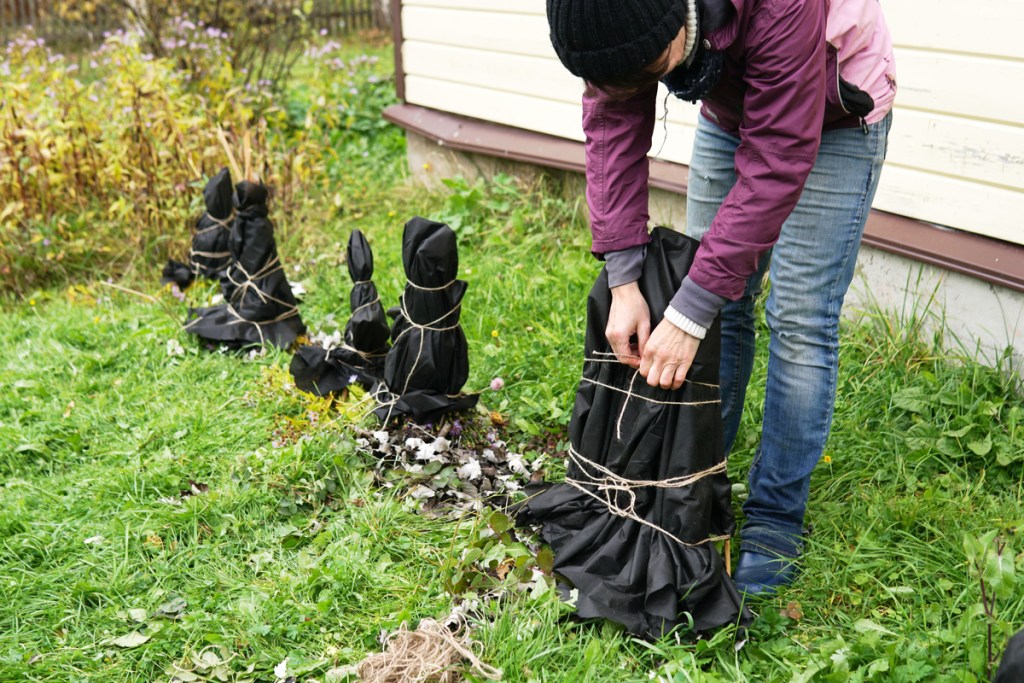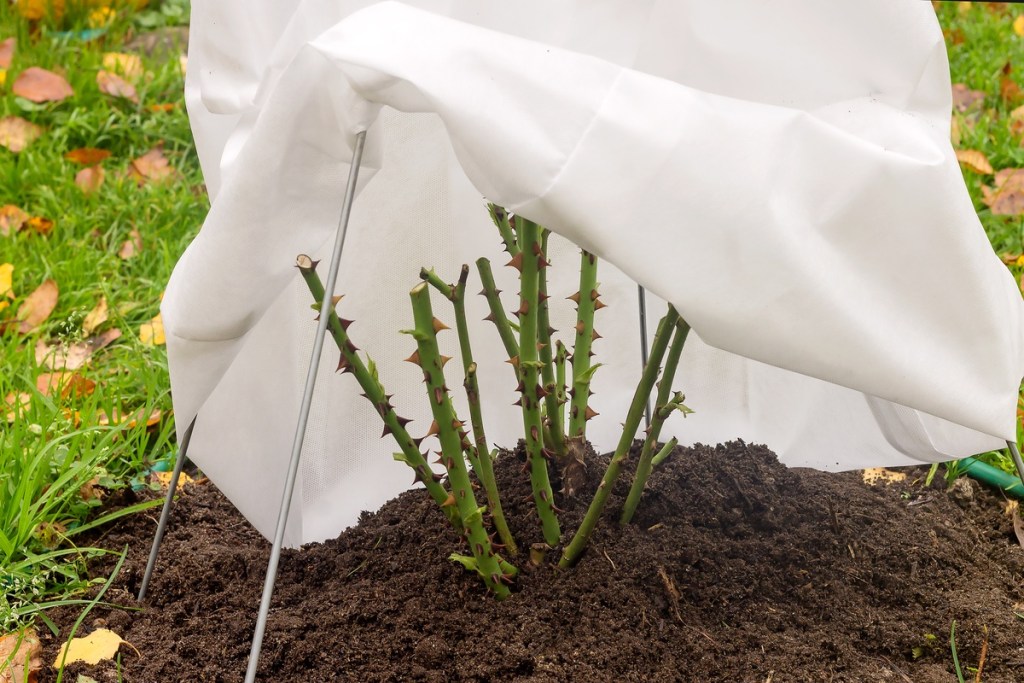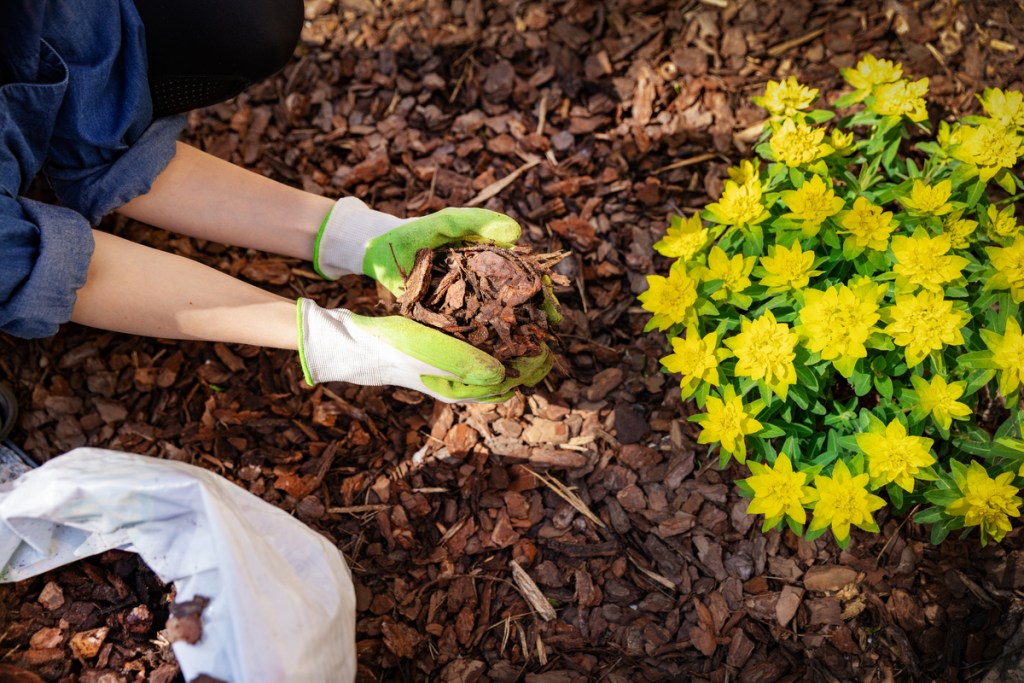With the days getting shorter and colder, everyone with even half a green thumb knows it’s time to winterize, and flowering plants can be among the most vulnerable to cold and frost, which means proper flower care is top of mind.
Prepare yourself and your little green buddies for the harsh weather ahead by following these simple steps. Once you have the correct information, you can come up with the strategy that best suits you and your flowering plants. No matter where you live, you can take steps now to make sure your flowers are in top shape once the snow melts.

How cold is too cold for flowers?
There are some general rules of thumb on this question, but before diving into those, it’s important to add the disclaimer that needs and results can vary by plant species and geographic region. What’s best for hot-weather marigolds, for example, may not be what’s best for pansies, which can withstand colder temperatures.
With that in mind, experts generally recommend flowers and other houseplants be brought inside or otherwise protected before the thermometer dips below 45 degrees Fahrenheit. For warmer-weather and tropical plants, that threshold is a bit higher, at around the 50-degree mark.
There’s no question that flowers need protection from frost and freezing temperatures. Many flowering plants won’t survive very long once temperatures dip below freezing and will typically die within a few hours once the mercury hits 28 degrees Fahrenheit.

How do I protect my flowers from cold nights?
The good news about cold weather is you can usually see it coming, meaning you have plenty of time to make adjustments and get protections in place before the first frost. (Even a few hours is enough to make a difference.) Even more good news: effective flower care is relatively easy and inexpensive and requires just a few simple steps. These steps include:
Bring potted plants inside. Simple as that. Find a sunny spot (or some grow lights) for your flowers and care for them as you usually would. This is especially important because potted plants are more susceptible to the cold than those in the ground.
Water your garden. This may seem counterintuitive, but wet soil acts as an insulator for the entire plant.
Water in the afternoon. While the early morning is often viewed as the optimal watering time, the middle of the day is better in cold weather when temperatures are at their warmest — and the chances of freezing are at their lowest.
Use plenty of mulch. Think of it as a blanket for your plants. Mulch traps the ground’s natural heat to help flowering plants stay warm.
Plant native flowers. Native plants are those that grow naturally in your area or climate, and as a result, have developed natural protections against the local weather patterns. This handy guide helps you find native plants, including flowers, that you can add to your garden.

When should I cover my cold flowers?
Perhaps the most crucial step to proper cold-weather flower care is covering your plants. But how you cover them, when you cover them, and what you cover them with is a topic unto itself, and it makes all the difference.
As noted above, it’s important to take precautions once the temperatures approach the 45 to 50-degree range. No matter what you use to cover your plants, the goal is the same: trapping warm air before it can evaporate into the chill.
Some of the best options for covering your flowering plants include:
Cardboard boxes: You can protect your flowers simply by raiding your recycling bin. Cardboard boxes give plants plenty of room and are great for cold nights. Just be sure to remove them in the morning.
Plastic drink jugs: Rinse your jug, cut off the bottom, and carefully place it over your flowering plants. It’s another no-cost option that provides terrific flower care.
Pots and other plant containers: Simply flip them over to cover the plants. Easy-peasy. Plastic plant containers work well in addition to the hardier terracotta, but avoid covering plants with plastic grocery bags, as they can damage flowers.
Plastic sheeting: This is readily available from any garden or home improvement store. Simply buy and drape over your flowers for heat-trapping protection.
Actual sheeting: Surprised? It turns out your bedding can keep plants warm, too. Find an old bed sheet or blanket and gently drape it over your plants. Be careful not to pick linens that are so heavy they might damage the flowers underneath.
It doesn’t need to be overly expensive, time-consuming, or labor-intensive to protect your flowering plants from plummeting temps. A little forethought and preparation can go a long way.
This goes not just for protection, but for what you include in your garden in the first place. Pay attention to the climate and weather conditions where you live and which plants are best suited to live alongside you. No matter your taste in flowers, however, there are straightforward steps you can take to make sure they survive the cold and live to shine in the sun again in a few months.



